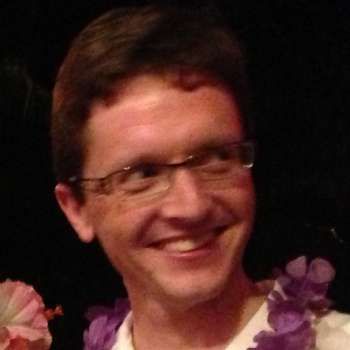While the billboard advertisements focussed on the presence of the ‘hit aria “Nessun dorma”’, there was much to enjoy in this revival of Graeme Murphy’s production of Turandot at the Sydney Opera House on Tuesday night besides the Act III showstopper. It was a sumptuous experience: a very strong cast with no real weak links made Puccini’s problematic final opera an auditory feast, and there was plenty for the eye to take in as well. From processions of tiny singing boys, to a dancer who might have strayed in from a production of Salome, to beefy guards naked to the waist, this was a production which wooed us with opulence.
The mise-en-scène drew heavily on a familiar repertory of oriental motifs, exemplified by giant Chinese curling dragons featured on lattice gates in Act II. Similarly, the costumes mostly accorded with typical Mandarin imagery, although to my untutored eye the guards’ rig-outs seemed rather to resemble Japanese shogun armour. There was also a strongly Japanese flavour in the presence of kuroko-like figures: stage-hands dressed head-to-toe in black which, by tradition, implies that they are invisible. These played a major part in the production with fans, ribbons and the like which gave the staging a feeling of constant flow.
This sense of movement and energy was captured from the outset by the ever-shifting choreography of the crowd. This kind of dynamism is something of a hall-mark of Murphy’s productions, reflecting his own background in dance. The chorus, while pretty competent, was rather outshone by the soloists in Act I. Jud Arthur as Timur was exemplary for the clarity of his diction, while Yonghoon Lee, in the role of Calàf, gave early evidence of a thrilling sound. The most affecting number in this act (and perhaps in the entire opera), Liù’s “Signore ascolta”, was given a winning grace by Hyeseoung Kwon.
In the Ping-Pang-Pong trio at the start of Act II, there was plenty of inventive use made of three carpet-like props: for instance when Ping reminisced about his house in Honan, this was transformed into a swinging chair (wielded by two of the men-in-black). Ultimately, however, this constant movement felt like it was being pursued for its own sake, and came across as a bit gimmicky. Despite the physical exertions required of them, the trio of Luke Gabbedy, John Longmuir and Graeme Macfarlane did very well both vocally and comedically.
The visual and dramatic high point of the production was undoubtedly the riddle scene. Various stage transformations culminated in the raising of a huge orb to reveal the Emperor Altoum, or rather just his head poking out a gigantic golden beehive structure. As part of the characterisation of this ineffectual leader, Benjamin Rasheed made his voice quavery, which made the powerful responses “Figlio del cielo” from Yonghoon Lee sound all the more heroic by contrast.
This use of physical elevation as a metaphor for social superiority wasn’t limited to the emperor: both the Mandarin (Gennadi Dubinsky in good voice) and Turandot herself were propped on pedestals moved around by the servants. As Turandot, Lise Lindstrom has to wait a long time to be heard (she is seen in Act I), but she showed her mettle in an impressive vocal duel with Calàf. With seemingly little effort, despite the notorious vocal difficulties of this section, she conveyed a superb sense of menace as she posed her questions, and was answered just as ringingly by her suitor. Her loss of inviolability once he responded to her final question was made obvious as she fell out of her gigantic frame, reduced to mortal stature.
Billowing sheets and dry ice opened Act III, lit in purple save where the spotlight was on Yonghoon Lee. “Nessun dorma” was delivered stylishly: Lee’s burnished tone made the final high note a pleasure, and was greeted with immediate applause overriding the playout. Liù’s self-sacrifice and death was very affecting, with some near me visibly in tears. The vocal calibre of Lee and Lindstrom was such that their big duet was still a pleasure to hear although the dramatic change in Turandot herself was no more convincing than I’ve ever found it before.
The famously problematic ending of the opera was played straight here: confetti fell amid joyful pageantry as “Nessun dorma” blared, as if trying to make us forget that the most sympathetic character had shortly before been tortured into taking her life by one half of the happy couple. However, dramatic flaws of the piece aside, this was a work celebrating the best of opera: superb singing, strong storytelling, glamour and spectacle, all marshalled well by Christian Badea and an on-form Australian Opera and Ballet Orchestra.




